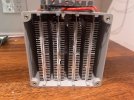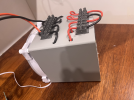tmtomh
Major Contributor
- Joined
- Aug 14, 2018
- Messages
- 3,242
- Likes
- 9,751
Too me that goes without saying by now, but I guess not to you and probably others. No wonder we have 80 pages in less than a month.
Oh, I think it does go without saying to @rdenney - there are just a few other folks who won't let it go and keep insisting that full power at 20kHz for 5 minutes is required or else the amp is a toy and the vendor's specs are fraudulent.
As for Rick's point, which you and I and many others agree on, we already know that at least one amp vendor tests their amps with pink noise at full power for 30 minutes and they don't overheat, go into protection, shut down, or otherwise complain or falter.
So it seems to me that the reasonable, "goes without saying" path forward is simply to settle on a signal (or small set of signals) that is more akin to pink noise than it is to white noise or to a single sine wave, and use that signal - with the guiding principle that the signal, similarly to pink noise, is modeled upon real-world use cases. And of course the signal should be on the difficult/extreme end of use cases, to ensure some headroom/robustness/abuse tolerance.
 ) where hell breaks loose after about half the song with full 30's and up to 100's at a constant rate with very low (I suspect) CR.
) where hell breaks loose after about half the song with full 30's and up to 100's at a constant rate with very low (I suspect) CR.
